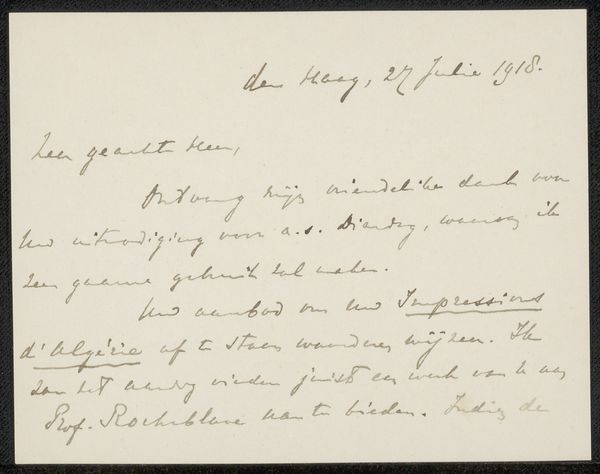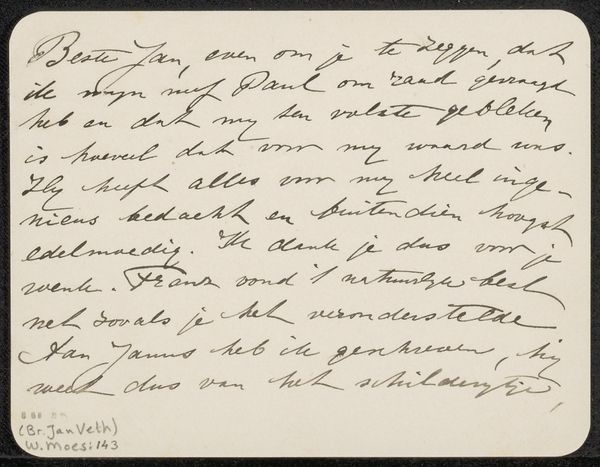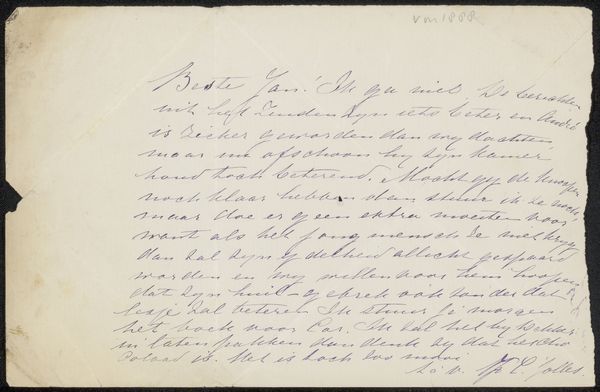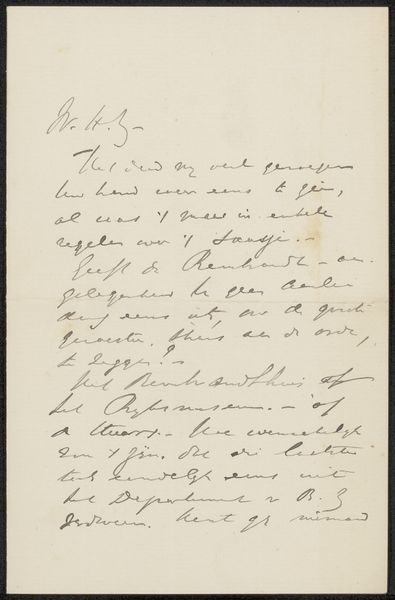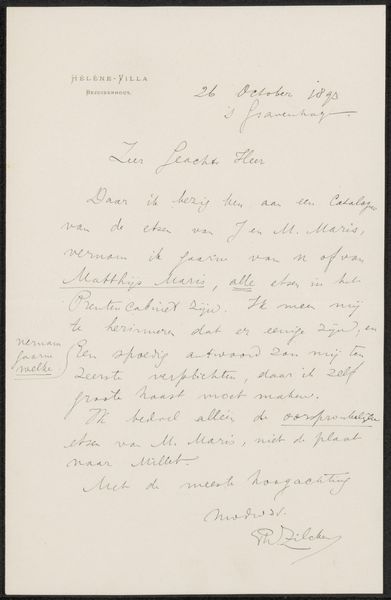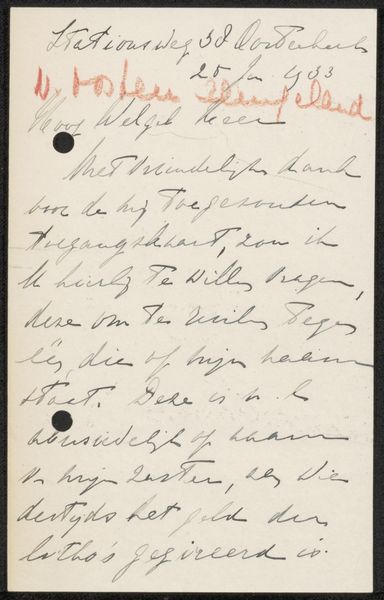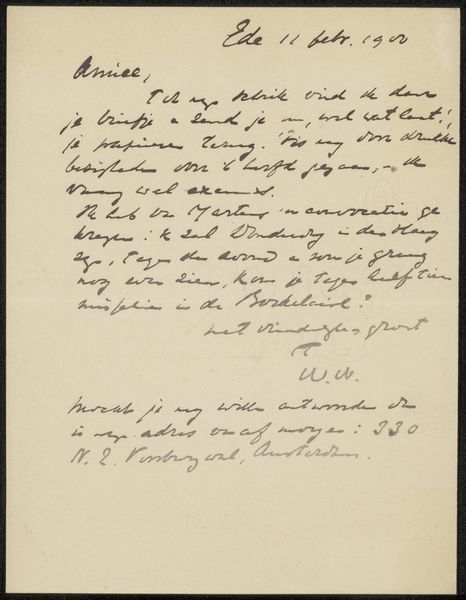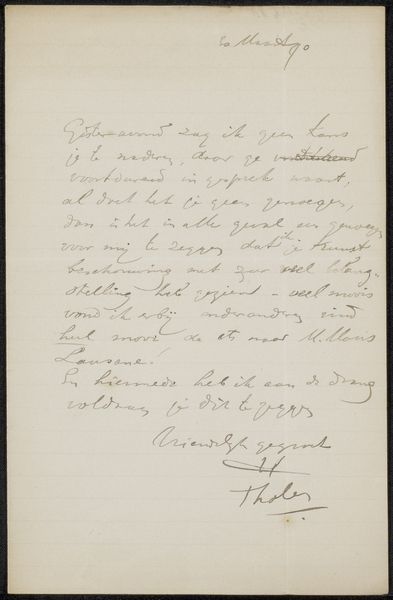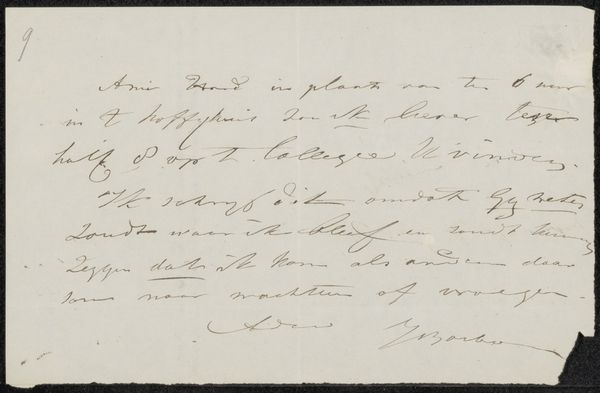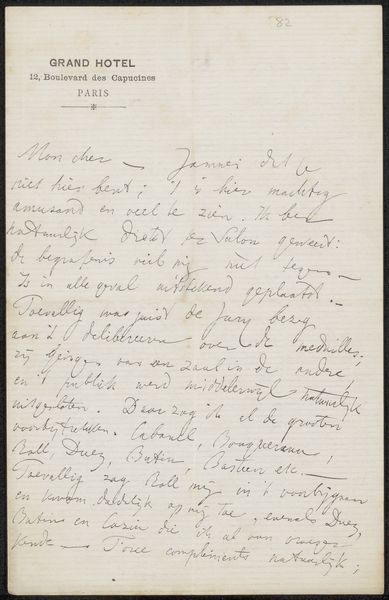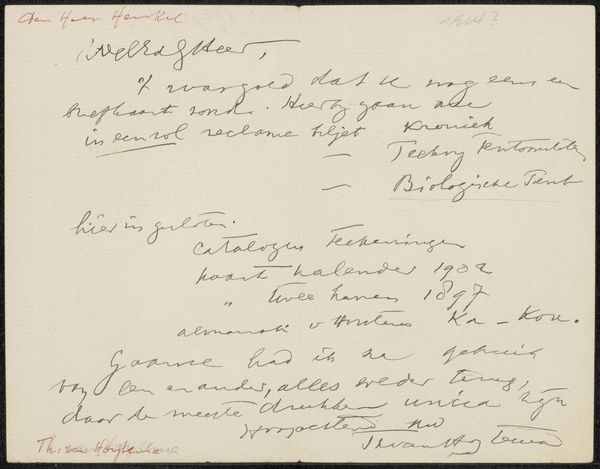
drawing, paper, ink, pen
#
portrait
#
drawing
#
ink paper printed
#
paper
#
ink
#
pen
Copyright: Rijks Museum: Open Domain
Curator: We’re looking at a work on paper by Willem de Zwart entitled "Brief aan Philip Zilcken." The piece is dated between 1872 and 1930 and features ink and pen. Editor: The immediate impression is one of intimacy. The delicate lines of the handwritten script against the aged paper feel inherently personal and ephemeral, almost like a captured thought fading with time. Curator: The act of handwriting itself, using pen and ink, speaks volumes. It represents a conscious, deliberate form of communication, a tradition steeped in history. Each stroke, each curve of the letters becomes imbued with intention. This very deliberate technique of applying medium is telling of an older, slower time. Editor: Structurally, notice how the composition avoids rigid formality, and the text occupies space organically. It's less about perfect legibility, more about capturing a flow of consciousness. This makes you ask about accessibility for contemporary audiences looking at the work. Curator: And perhaps that lack of rigid structure speaks to the nature of the relationship between de Zwart and Zilcken. Letters have always been vessels of not just information, but the soul as well, mirroring the complex exchange between individuals, becoming treasured mementos after one person is no longer present in the life of the other. Editor: Thinking semiotically, each character, even illegible, can be interpreted as signifiers laden with personal meaning. What was unsaid between the lines holds just as much interpretive power to audiences viewing the material today. Curator: The pale ink also suggests a kind of vulnerability. A willingness to lay bare the unspoken truths, or quiet meditations, to the person at the receiving end of the missive, adding complexity to the sender and receiver dyad, in our contemporary context. Editor: So, we began simply observing marks on paper and delved into an era and interaction suspended in time through structural analysis, exploring visual composition. Curator: It’s interesting how this small drawing allows us to understand not just a historical record but also about the deep, abiding nature of relationships throughout history.
Comments
No comments
Be the first to comment and join the conversation on the ultimate creative platform.
